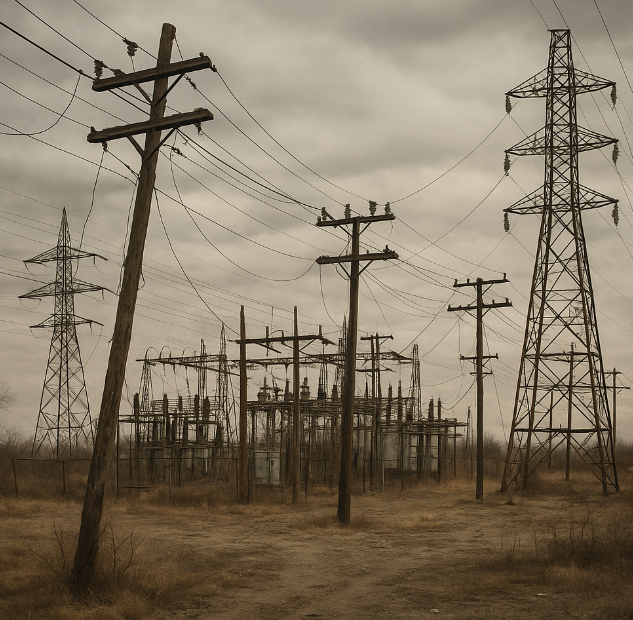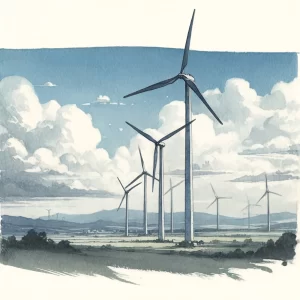
When Energy Rates Aren’t Equal
A family in New York City may pay nearly twice as much for electricity as a family upstate—even if they use less energy. New research shows that race, not just income, shapes who pays more for the same essential service
Think of your electricity bill like a restaurant check. Imagine sitting at a table, ordering less food than your neighbor, yet somehow ending up with a higher bill. Across the United States, this is happening every month—except the “restaurant” is your utility company, and the unfair charges often fall hardest on Black, Latino, and Indigenous households.
The Research Story
A team of researchers from Columbia University, UC Berkeley, and the University of Michigan asked a tough question: Do communities of color pay more for electricity, even when they use less? To find out, they pulled data from three very different states—Alabama, California, and New York—between 2017 and 2021.
They combined utility revenue and consumption records with demographic data from the U.S. Census. By mapping out which areas were majority white and which were majority Black, Indigenous, and people of color (BIPOC), they could compare who pays what—and why.
The Findings
The Problem: In nearly every case, utilities serving majority-BIPOC communities charged higher rates per unit of electricity than those serving mostly white communities.
- In Alabama, public utilities in BIPOC-majority areas charged about 10% more per kilowatt-hour than those in white areas.
- In California, investor-owned utilities serving cities with large BIPOC populations (like PG&E in San Francisco and SCE in Los Angeles) charged more, especially after wildfire-related costs drove rates up.
- In New York, the differences were staggering: Consolidated Edison, serving New York City’s diverse population, charged 71% higher rates than other utilities in the state.
The Twist: Despite higher prices, households in BIPOC areas used less energy overall. People limited their consumption to save money, often sacrificing comfort, such as running less heat in winter or air conditioning in summer. Bills still ended up as high—or higher—than in whiter, wealthier neighborhoods.
The Bigger Picture: This isn’t just about personal budgeting. It reflects a century of structural racism baked into housing policies, neighborhood segregation, and utility governance. Communities of color often live with older infrastructure, higher pollution levels, and less political power to influence energy pricing.
Why It Matters Globally
In Lagos, Nigeria, families cope with frequent power outages by running costly generators. In rural India, households struggle to balance limited electricity access with the high costs of backup systems. In São Paulo, Brazil, residents of poorer favelas often pay more for electricity than those in wealthier districts due to informal connections and aging infrastructure.
The story is the same across continents: the people who can least afford it often pay the most for energy. The U.S. case study provides data-backed evidence of how systemic inequities infiltrate even the most basic necessities—such as keeping the lights on.
Historical Context
For decades, U.S. policies like redlining and segregation determined where people lived and what infrastructure was built in their neighborhoods. Utilities—designed as monopolies—followed those same lines. Today, those patterns mean that communities of color are more likely to be locked into expensive, less efficient energy systems.
It’s the echo of an old injustice in a modern bill.
Electricity rates are somewhat comparable to ticket prices at a sports stadium. Everyone’s watching the same game, but some sections—often the ones with the worst views—are charged more because of the stadium’s design. You don’t get better service, just a worse deal.
Moving Toward Solutions
The study’s authors stress that fixing this requires more than just lowering bills. It demands:
- Transparent data: Utilities rarely report how race and income shape who pays what. Regulators could require this.
- Fairer rate design: Instead of “equal” flat rates, pricing could scale by income or offer protections for vulnerable households.
- Investment in infrastructure: Upgrading energy systems in historically underfunded neighborhoods reduces both costs and outages.
Unless these steps are taken, efforts to build a greener, cleaner energy future risk deepening existing inequalities.
Electricity isn’t a luxury—it’s a lifeline. Yet, for millions, the cost of keeping the lights on reflects an unfair burden carried across generations.
Let’s explore together:
- Could your community benefit from a different model of utility governance?
- If you were designing fair energy rates, what factors would you include?
- What other hidden costs in daily life might reflect deeper structural inequities?



